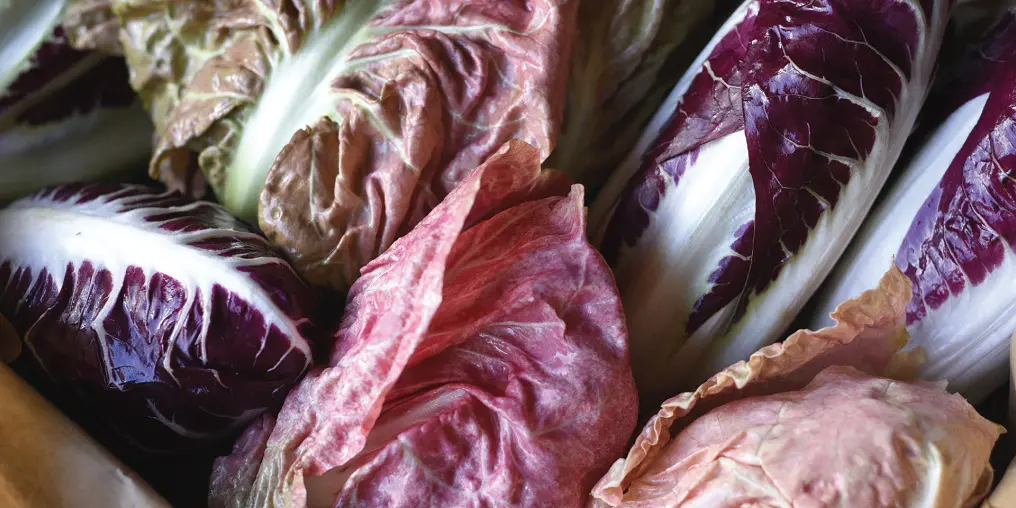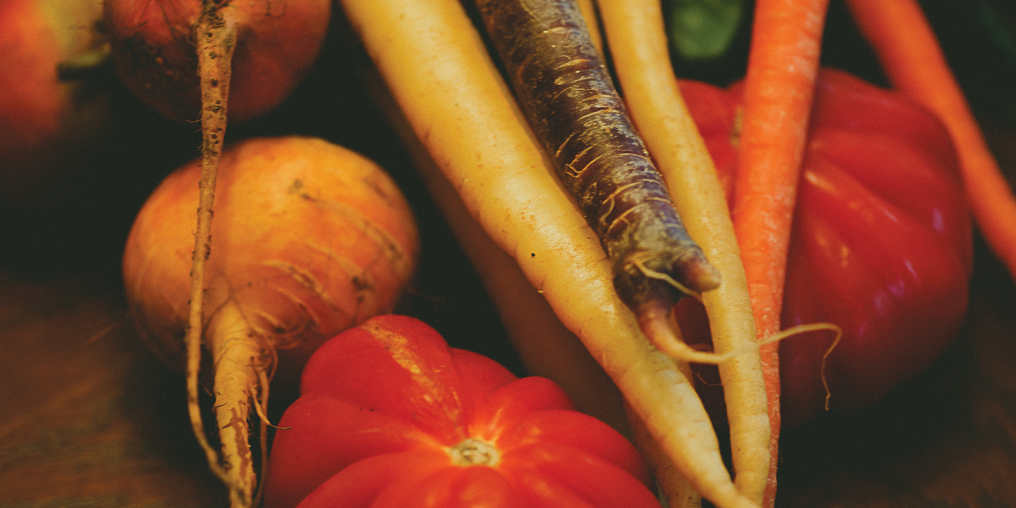If your knowledge of chicory is limited, allow me to introduce you to this family of vegetables full of complex, vibrant flavours and colours. I think you’ll enjoy getting to know them.
Arugula, radicchio, endive, and even dandelions are chicories. When grocery shopping, most folks pass them by; I suspect we’re a bit intimidated by these more uncommon offerings—wary of their bitterness, perhaps, or just unfamiliar with how to best prepare them.
This family is fantastically varied beyond what you can find in the grocery store. You’ve likely had a curious peek at the pale torpedoes of Belgian endive, red spears of radicchio (often mistaken for cabbage), or shaggy heads of frisee (aka curly endive), before reaching for more familiar spinach or romaine hearts shipped here from afar. But chicories are nutritional powerhouses, easy to prepare, absolutely delicious, and locally grown. They may be just the shake-up your dinnertime repertoire is looking for.
Help chicories reach their full potential!
Chicories are related to, but botanically distinct from, lettuce. They are usually included in mesclun mixes for their bright colour, crisp texture, and pleasant bitterness. But while many chicories would be perfectly happy as part of a refreshing salad, they are capable of much more.
If you’re a fan of dark beers, coffees, and chocolate, it should come as no surprise that bitter flavours are genuinely enjoyable, to be sought out and celebrated. If you’re still quaffing double doubles and Lucky Lager, then perhaps my argument might miss its mark. Regardless, it is important to know that the trick to managing bitterness (and life in general) is balance. The refreshing, complex—and yes, bitter—flavours of chicories play well with other bold flavours, like funky cheese, sweet citrus, earthy beets, and salty bits like capers and olives.
Chicories love heat: they can be flung onto the grill, tossed in a hot pan, or bathed in warm dressing, and will greedily ask for more. Gauge your application of heat with the structure of the leaf; a tight head of radicchio with thick ribs would do well cut into large wedges and grilled, while a head of frisee would be happy with a liberal toss in a warm vinaigrette with anchovy or bacon and shallots.
How to grow chicories
There are two different ways to grow chicories: field grown and forced. Field grown is as you would expect: seeds are directly sown or planted as seedlings, grown to maturity, and harvested late in the fall. Forcing is an old peasant trick that produces fresh greens at a time of year when fields are particularly lean: first, the plants are dug up and moved to an artificially cold area where they enter a dormant phase. Then they are transplanted into vessels filled with peat or water in an area of warmth—but in absolute darkness. The warmth tricks the plant into thinking it’s spring, and from the dormant taproot emerges a crisp, pale chicory bud. In the words of seed company Uprising Seeds, “This very tender growth … can be the pinnacle of radicchio deliciousness.”
Forcing requires careful timing, attentiveness, and specialized infrastructure, and this unique and somewhat odd approach yields some truly alien-looking results. To the best of my knowledge, Jill Lamberts at Shorewolf Farm is the only Comox Valley farmer currently growing forced chicories, which provide a welcome pop of freshness and colour in early spring (she also grows an extensive list of field chicories). Shorewolf’s forced varieties include radicchios like the rich burgundy-coloured Tardivo, which resembles a pack of hooded snakes, and Gorizia, which is bright pink and looks like a rose. Then there’s puntarelle, whose Medusa-like appearance has to be seen to be believed.
Whether forced or field grown, I believe chicories deserve their day in the sun (or warm darkness). Peel back the layers and delve into a delicious new cooking realm.





